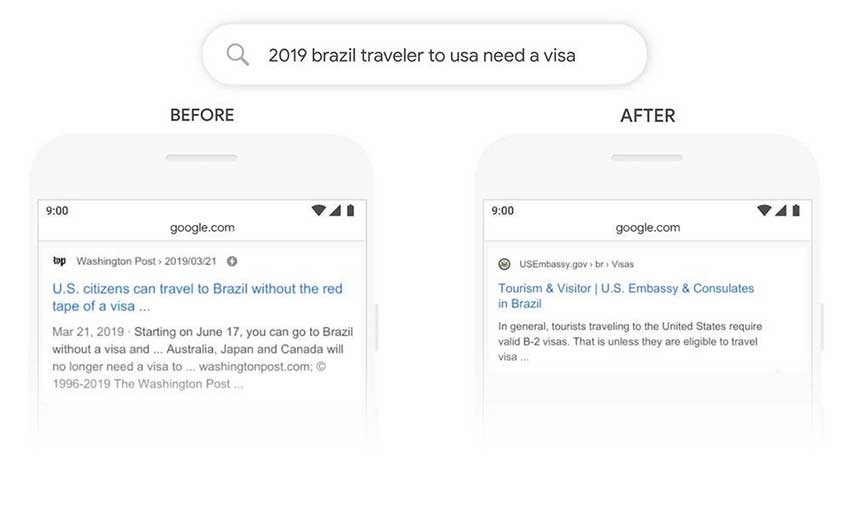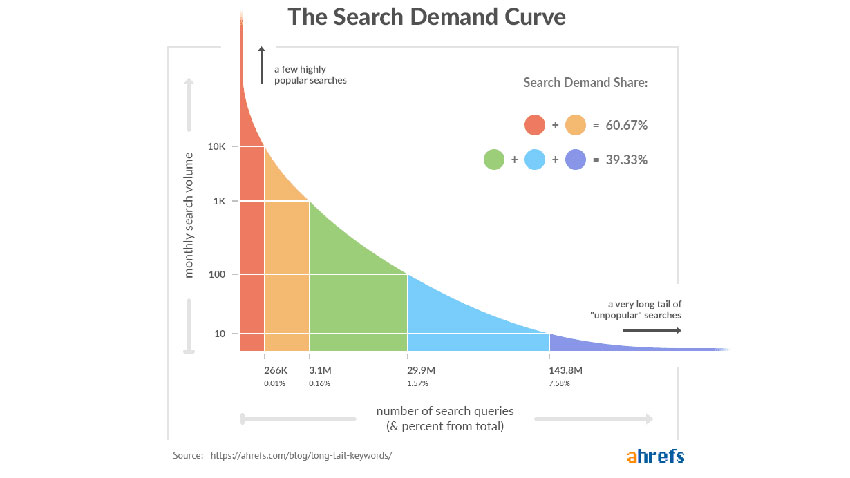Show:
How Natural Language Processing (NLP) Affects SEO
Digital marketing has become a critical factor in achieving business success. One of the most vital digital marketing methods is Search Engine Optimization (SEO). SEO helps your website rank at the top of Search Engine Result Pages (SERPs), making it easier for potential customers to find your business. To ensure your website stays on Google’s first page, you continually need to do SEO to match algorithms that change over time. One of the game-changers in reworking your SEO strategy could be Natural Language Processing (NLP). This article will discuss NLP, its relation to Google BERT, and what you can learn from NLP to optimize your website for Google. Let’s dive right in.

What Is NLP? A General Definition
NLP is a branch of Artificial Intelligence (AI) that helps computers recognize, understand, and generate natural language in a valuable way. NLP uses the principles of computer science and linguistics to connect the bridge between human communication and computer understanding. NLP works algorithm-based and uses many different techniques, including statistics and machine learning. It helps to make human language machine-readable since text-based data, voice-based data, and computer linguistics vary widely. Simply put, NLP takes natural human language, breaks it down into short elements, analyses how each piece comes together, and extracts the meaning out of it. This functionality is also used for a variety of applications outside the SEO space, such as:
- Content categorization: Summarizing and classifying text-based content.
- Topic discovery: Capturing the main topic of a text document.
- Contextual extraction: Extracting data from text-based sources.
- Sentiment analysis: Identifying moods and opinions from a large amount of text, whether the emotions are negative, neutral, or positive.
In all of these cases, the goal is to take raw text-based input and analyze the text’s semantics to figure out meta-data, e.g., the meaning or the emotional tone.
BERT and NLP
BERT, short for Bidirectional Encoder Representation from Transformers, is a Google Algorithm Update from 2018. This update aims to improve Google’s language understanding, particularly natural/conversational language. BERT helps Google better understand the context of words and match search queries much better with search results. BERT is made based on Transformers, a deep learning model that connects every input element to every output element. And thanks to the introduction of Transformers, BERT can read text input in both directions: left-to-right and right-to-left. This capability is known as bi-directionality, and thus the name BERT. BERT itself is a revolutionary NLP model made of a collection of data (pre-trained models) and a methodology to learn these models. It has outperformed older NLP models and was pre-trained on a vast dataset, including the entire Wikipedia and a book corpus.
How NLP Enhances Search Quality
As people use the search bar, they are most likely unsure about what they want to request. The search bar’s heart is to understand what kind of question the user is asking. However, according to Google’s blog, 15% (Source) of Google’s search queries are entirely new. So when someone enters a search query, there is not enough historical data to make the machine understand it. NLP is a significant improvement to how Google understands queries, further serving the primary purpose of the Search function. NLP allows Google to understand a search query based on its context instead of word-by-word meaning. This feature is especially beneficial for queries with prepositions such as “for” or “to”. Here’s an example from Google’s blog:

In the example, the preposition “to” is used. Years ago, the algorithm did not understand the importance of this proposition. It mainly focused on the countries Brazil and the USA. Thus it returned results for US citizens traveling to Brazil instead of the other way around. With NLP, the algorithm realizes the importance of the word “to” and can thus show a more accurate result. With the update, Google not only can better understand users’ search queries but also your content. The algorithm will be able to analyze your content better and understand what topics your website is covering. This functionality allows the search engine better to match the users’ queries to the related content, providing more precise answers to search queries.
How to Optimize Your Site for NLP
Journalist Danny Sullivan tweeted in 2019 that there is not much that SEOs can do to optimize sites for NLP. However, John Mueller, in a more recent Google webinar, explained that the best way to optimize your website for NLP is by writing naturally. It is essential to make your writing natural and easy to understand instead of stuffing it with keywords. It is also about content relevance. What questions do people ask about a particular topic? What statistics are essential, and so on. For example, when someone is looking for information about selling old books on Amazon, what are the questions one has? While there aren’t many things you can do to optimize your site specifically for BERT, you can improve your web content’s relevance.
Optimize for User Intent
As Google continually improves its search algorithm, Google can understand what users are looking for and give them the most relevant result. User intent itself is what users are really looking for when browsing the internet. In general, there are three types of searches:
- Informational – How to track SEO rankings
- Navigational – Wordtracker blog
- Purchase – Buy shoes
When creating content for your blog, understand what people are searching for on the internet. Most blog content is for information search. In this case, you need to figure out precisely what information users want to find. Fortunately, this is quite simple. All you need to do is check Google’s top search results. If you can understand the users’ intent, you can provide them with excellent content and generate more organic traffic.
Write naturally
As Google developed BERT to understand daily human language, it is best to write your articles naturally, how humans converse daily. You no longer need to stuff your articles with a bunch of keywords to improve SEO rankings as Google no longer reads content like in 2000.
Optimize for long-tail keywords
Long-tail keywords are often defined to be the number of words used in a search query. However, the long-tail keyword got its name from the graph below, illustrating the graph’s long tail, which represents high-precise search queries.

According to the Search Demand Curve, as much as 70% of all searches performed online consist of long-tail keywords.
Here’s an example of how people use long-tail keywords when they search for information on the web. According to the table, you can see that a two-word keyword “gain weight” has a lower search volume than a long-tail keyword “how to gain weight”.

With this said, by targeting long-tail keywords in your content, you can drive more traffic to your site since nearly all people use long-tail keywords in their search queries instead of normal ones.
“Also Ask For”
It’s quite simple. To determine your content’s relevance, Google (and other search engines) analyzes what topics you cover within it. Logically, if you answer all the reader’s questions on a particular topic, your relevance score increases. What could be better than answering all questions?
You’re right. – nothing.
When scrolling through Google, you will notice the “People Also Ask” (PAA) box and all related questions to your search query. This feature from Google can help you with this. When you cover the “Also Ask For”-questions within your content, search engines will give your content a much higher relevance score. Thus, your organic traffic increases.
Basic SEO elements
Last but not least, you should not forget essential SEO elements while optimizing your site. Here are some of the critical SEO elements to include in all of your contents:
- Title Tag: Gives the overall context of the page and lets the search engine understand the page’s content
- Meta Description: Describes what the page is about.
- Headlines: H1-H6 allows both your readers and the search engine to understand your page better.
- Image Optimization: Alt-Tags describe what an image is about.
Now we have learned more about NLP and how it affects your site’s rank in the search engine. Optimizing your site continuously and keeping your content up to date with the search engine’s algorithm work wonders on your SEO ranks and let your content ranks higher in search results. As search engines become much smarter, your site’s qualifications to stay on top keep changing as well. Thus, it is essential always to revise your site to make sure that it is relevant to the changing algorithms.
About the author:
Moritz Bauer is an online seller from Germany with years of experience in digital marketing. He’s currently writing on smartminded – a blog for Amazon sellers.

 Return to Previous Page
Return to Previous Page








